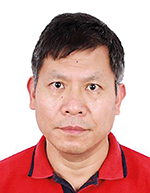

Boasting some of the world’s best renewable resources, the Africa and Middle East (AME) region is well positioned to host gigawatt-size hydrogen production sites. “It is anticipated that the region will drive product platform and foundational core technology innovation in the hydrogen production and energy storage area,” predicts Alan Zhao, who heads up the New Power business for power technology innovator, Cummins, in the AME region.
For the New Power technologies requiring large-scale infrastructure buildout, Zhao expects these to follow a similar path to the traditional internal combustion engine. In terms of traditional products, however, there is limited innovation in the AME region at the product platform level. “The region has been playing a late-adopter role for Cummins’ engine-based products,” notes Zhao.
“At Cummins, innovation at the global product platform and fundamental component level impacts both developed and developing economies. Beyond this, we have innovation that impacts the regional and market segment level in any stage of an economy, which we refer to as fit-for-market innovation,” he says.
The full ecosystem of zero-emission technology encompasses upstream, midstream and downstream. Cummins continues to invest in other advanced technology to minimise emissions, including fuel-agnostic engines such as hydrogen and natural-gas models.
On the upstream side, Cummins has cutting-edge electrolyser hydrogen generation products. It deployed the world’s largest 20 MW Proton Exchange Membrane (PEM) electrolyser three years ago while most of the players in this sector were still at the concept stage. On the midstream side, Cummins has extensive energy and hydrogen storage solutions, while downstream it has fuel cells for stationary power and mobility applications.
For example, Cummins’ fuel cell technology is behind Alstom’s hydrogen-powered zero-emission train in Germany. Major customers such as Werner Enterprise have specified hydrogen combustion engines for its delivery trucks. “As you can see, we are innovating and deploying our Destination Zero technologies into economically critical applications,” highlights Zhao.
Cummins added the New Power business unit as part of its PLANET 2050 environmental sustainability strategy, which sets eight quantifiable goals for 2030, along with three longer-term aspirations aimed at 2050. The strategy was adopted in 2019 during Cummins’ centenary year. The three focus areas for the strategy are to reduce greenhouse gas and air emissions in line with expert recommendations, use natural resources in the most sustainable way possible, and assist communities in addressing their major environmental challenges.
Two of the eight 2030 goals pledge a 25% reduction in emissions from newly sold products, and partnering with customers to reduce emissions from products in the field by 55 million metric tons.
Looking more broadly at the hydrogen economy, Zhao defines this as an ecosystem of products and solutions that commences with hydrogen generation, to hydrogen and energy storage, to applications and business segments powered or enabled by hydrogen. In addition, the hydrogen economy also means powering economic activities in a decarbonised manner to eliminate carbon emissions.
Hydrogen is also differentiated on the basis of the quantity of carbon emissions and/or power sources producing it. For example, ‘green’ hydrogen means it is produced through water electrolysis powered by purely renewable sources such as solar, wind and hydropower. ‘Blue’ hydrogen means it is produced from hydrocarbon-based sources such as natural gas, but with no carbon emissions due to carbon capture technology. ‘Grey’ hydrogen, on the other hand, is produced by steam reforming of fossil fuels, which produces carbon emissions.
Last, but by no means least, the hydrogen economy means viable and thriving economies based on the hydrogen ecosystem. “This is a critical component to deliver sustainable impact. If it is not viable and thriving, it will not last, and therefore not deliver the desired lasting impact,” stresses Zhao. “I believe strongly in a thriving hydrogen economy, based on some successful use-cases and strong fundamental business cases for certain business segments. Those successes provide positive reinforcements to the hydrogen ecosystem. However, it will take time to go through the innovation adaption curve, just like any great innovation.
He goes on to forecast that there are likely to be some applications and use-cases generating a great deal of enthusiasm now that will not pass the harsh reality of economic viability, but some will return as thriving applications when the ecosystem is ready for it. “Successful energy transition requires massive innovation and collaboration from the entire ecosystem of willing partners. Friendly competition is a key ingredient to drive critical and continuous improvement towards sustained impact. So, while competing to offer the best we can at any given stage of this long transition, together we can make it happen.”
Zhao was a recent speaker at the Hydrogen Economy Discussion event on 6 September at the Johannesburg Country Club. Focusing on global developments, implications and opportunities, the event looked at hydrogen as a powerful enabler for the global energy transition as we seek to diversify energy sources and fast-track the route to ‘net zero’. In South Africa, the discussion centres around opportunities to become a leading player in the global hydrogen economy, given its unique position as the world’s largest producer of PGMs (platinum group metals) and its huge potential for renewable energy production.
In addition, Zhao was a speaker at the Hydrogen-Africa Summit 2022 from 28 to 29 September at the Hilton Sandton in Johannesburg. The summit placed the spotlight on green hydrogen’s potential to alter several value chains in the energy business, as well as in the mobility and industrial sectors, due to global climate change initiatives.

© Technews Publishing (Pty) Ltd | All Rights Reserved